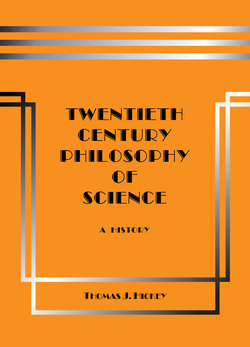Читать книгу Twentieth-Century Philosophy of Science: A History (Third Edition) - Thomas J. Hickey - Страница 93
На сайте Литреса книга снята с продажи.
4.13 Examples of Successful Discovery Systems
ОглавлениеThere are several examples of successful discovery systems in actual use. John Sonquist developed his AID system for his Ph.D. dissertation in sociology at the University of Chicago. His dissertation was written in 1961, when William F. Ogburn was department chairman, which was before the romantics took over the University of Chicago sociology department. He described the system in his Multivariate Model Building: Validation of a Search Strategy (1970). The system has long been used at the University of Michigan Survey Research Center. Now modified as the CHAID system using χ2 Sonquist’s discovery system is available commercially in SAS and SPSS statistical software packages. Its principal commercial application is for list processing for market analysis and for risk analysis as well as for academic investigations in social science. It is not only the oldest mechanized discovery system but also the most widely used in practical applications to date.
Robert Litterman developed his BVAR system for his Ph.D. dissertation in economics at the University of Minnesota. He described the system in his Techniques for Forecasting Using Vector Autoregressions (1984). The economists at the Federal Reserve Bank of Minneapolis have long used his system for macroeconomic and regional economic analysis. It has also been used for regional economic analysis both by the State of Connecticut and the State of Indiana.
Having previously received an M.A. degree in economics Hickey had intended to develop his METAMODEL computerized discovery system for a Ph.D. dissertation in philosophy of science while a graduate student in the philosophy department of the University of Notre Dame, South Bend, Indiana. But the Notre Dame philosophers under the chairmanship of a Reverend Ernan McMullin were obstructionist to Hickey views, and Hickey dropped out. He then developed his computerized discovery system as a nondegree student at San Jose City College in San Jose, California.
For thirty years afterwards Hickey used his discovery system occupationally, working as a research econometrician in both business and government. For six of those years he used his system for Institutionalist macroeconometric modeling and regional econometric modeling for the State of Indiana Department of Commerce. He also used it for econometric market analysis and risk analysis for various business corporations including USX/United States Steel Corporation, BAT(UK)/Brown and Williamson Company, Pepsi/Quaker Oats Company, Altria/Kraft Foods Company, Allstate Insurance Company, and TransUnion LLC.
In 2004 TransUnion’s Analytical Services Group purchased a perpetual license to use his METAMODEL system for their consumer credit risk analyses using their proprietary TrenData aggregated quarterly time series extracted from their large national database of consumer credit files. Hickey used the models generated by the discovery system to forecast payment delinquency rates, bankruptcy filings, average balances and other consumer borrower characteristics that constitute risk exposure for lenders, especially during the contractionary phase of the business cycle. He also used the system at Quaker Oats and Kraft Foods to discover the sociological and demographic factors responsible for the secular long-term market dynamics of food products and other nondurable consumer goods.
More about discovery systems and the evolution of computational philosophy of science is in BOOK VIII below.
